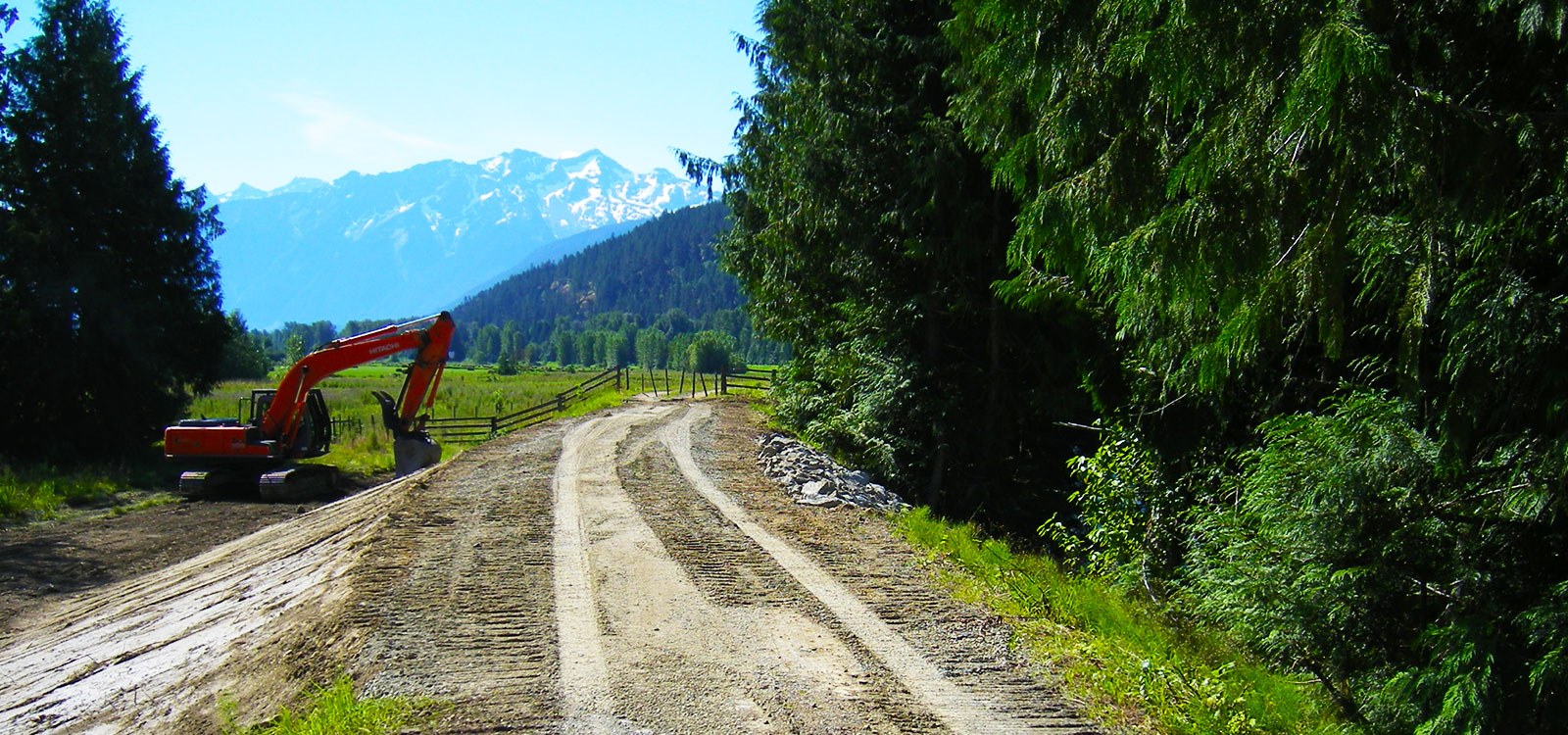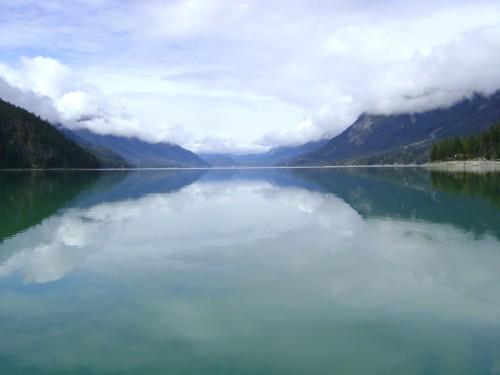Dyke Maintenance and Monitoring
A sizeable maintenance and monitoring program is required in order to attend to all 40 km of dykes.
The PVDD carries out an annual inspection and corresponding report to the Ministry of Environment, Inspector of Dikes office. Additional inspections are conducted throughout the year in order to locate deficiencies. Examples of deficiencies include sink holes, slumping, burrowing animals, and trails cutting into dyke slopes from herds or pedestrians.
Vegetation management is also critical. Trimmed grass is good for stabilizing dykes, however, trees and shrubs are not. Trees can root deep into the structure and possibly right through it. This can result in piping, where pressurized water from the river seeps along the roots removing material from the dyke body, potentially destabilizing the dike. Larger trees rooted in dykes have the potential to cause damage if they blow over or are struck by floating debris, tearing the root mass out of the dyke. For these reasons the dyke network is mowed each year. Additionally, a brushing program has recently been adopted to manage shrubs and trees along the toe of the dyke. For a more detailed description of Dyke Maintenance and Monitoring carried out by the PVDD please refer to Ministry of Forests, Lands and Natural Resource Operations, Guidelines for Management of Flood Protection Works in BC
Today’s dykes are designed to provide protection from a 1:200 year flood event – the flood that statically occurs once every 200 years. Dykes are assessed and designed using detailed river and dyke survey information, rainfall and river flow data, river characteristics and watershed mapping. Once gathered, this information is used to generate a computer model identifying the 200 year water level in relation to the crest of the dyke or river bank. Since 2000, the PVDD has commissioned several engineering reports to assess flood protection in the valley. Recommendations from these reports are considered and prioritized by the PVDD according to feasibility, funding availability and social impacts. The following Reports are available:
- Pemberton Valley Corridor Study, 2001
-
- Publisher: Kerr Wood Leidal Associates Ltd
- Publish Date: December 2001
- Ryan River Dyke Assessment, February 2009
-
- Publisher: Kerr Wood Leidal Associates Ltd
- Publish Date: February 2009





